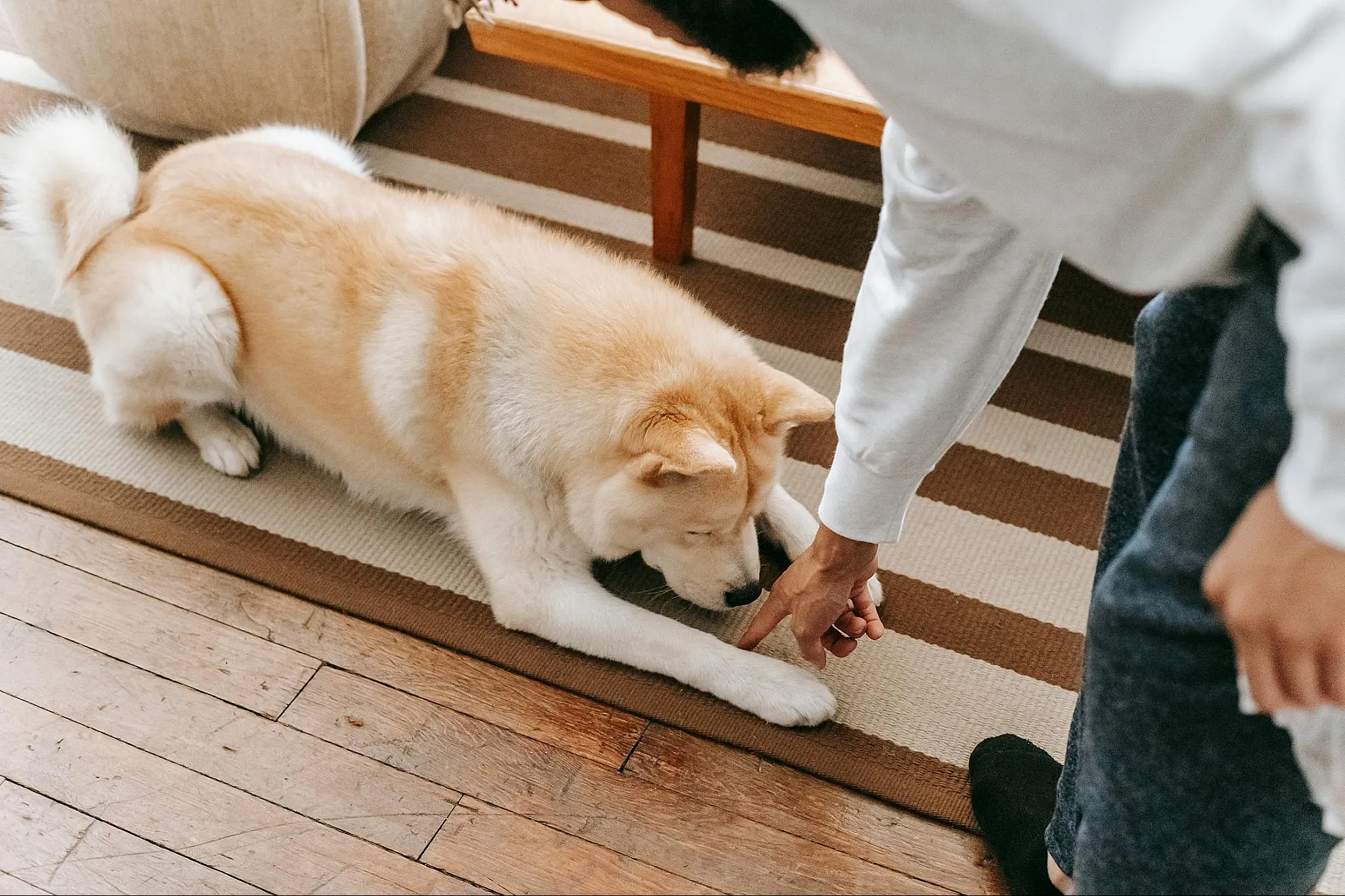Understanding Dog Scent Training
Dog scent training is a specialized form of training that harnesses a dog’s natural ability to detect and follow scents. It involves teaching dogs to identify specific odor molecules, such as those of narcotics or explosives, and to alert their handlers. This type of training is commonly used in search and rescue operations, law enforcement, and even in medical detection, such as cancer detection dogs. By understanding the intricacies of dog scent training, handlers can effectively communicate with their dogs and achieve successful results in various scent work scenarios.
Introduction to Dog Scent Training
Dog scent training is a specialized form of training that harnesses the incredible olfactory abilities of dogs. This training focuses on teaching dogs to detect and identify specific odors, such as narcotics or explosives. By utilizing their highly sensitive noses, dogs are able to locate and alert their handlers to the presence of these targeted scents. Dog scent training is commonly used in search and rescue operations, law enforcement, and even in medical detection. This comprehensive guide will provide insights into the importance of scent training, basic and advanced training techniques, common challenges, and the benefits of dog scent training.
Importance of Scent Training for Dogs
Scent training is of paramount importance for dogs due to their exceptional sense of smell. This specialized training enhances their natural abilities and provides mental stimulation. By engaging in scent work, dogs develop better focus, concentration, and problem-solving skills. It also allows them to utilize their senses in a productive and controlled manner. Scent training promotes a stronger bond between dogs and their handlers, as they work together as a team. Moreover, scent training can be a life-saving skill, as dogs trained to detect odors like narcotics or explosives assist in search and rescue missions and law enforcement operations.
Getting Started with Dog Scent Training
Getting started with dog scent training involves several key steps to ensure a successful training journey. First, it is important to choose the right training supplies, such as scent detection kit, treats, and rewards. Next, basic training techniques, including introducing the target scent and teaching the dog to associate it with a reward, should be implemented. As the training progresses, gradually increase the difficulty levels by hiding the scent in different locations or using additional scents. Consistency, patience, and positive reinforcement are vital throughout the training process. With time and practice, both the dog and the handler will develop a strong foundation in scent work.
Choosing the Right Training Supplies
When it comes to dog scent training, choosing the right training supplies is crucial for success. A dog scent training kit should include essential oils, which serve as the target scents for the training. These oils should be safe for dogs and have strong, distinct aromas. Additionally, having treats and rewards that your dog finds highly motivating is important for reinforcing positive behavior during training. Other useful supplies include scent containers or tubes for holding the target scents, as well as a clicker or a marker word to signal to your dog when they have successfully identified the scent. By selecting the appropriate training supplies, you can create a productive and enjoyable scent training experience for both you and your dog.
Basic Training Techniques for Scent Work
When it comes to basic training techniques for scent work, there are several key steps to follow. First, it’s important to establish a strong foundation by teaching your dog a solid “find it” command. This can be done by hiding a scented object and rewarding your dog when they locate it. Next, you can begin incorporating search games, such as hiding scented containers or tubes in different areas for your dog to find. Gradually increase the difficulty by adding distractions and varying the hiding spots. Consistency and positive reinforcement are key throughout the training process. Remember to always praise and reward your dog for successful scent identification.
Advanced Scent Training Methods
Advanced scent training methods take dog scent training to the next level by teaching dogs to identify different scents and increasing the difficulty of the training exercises. One method is teaching dogs to discriminate between multiple scents by using a scent lineup or scent wheel. This involves presenting the dog with a set of scented objects and rewarding them for correctly identifying the target scent. Another method is imprinting, where dogs are trained to recognize a specific scent and indicate its location. Imprinting is often used in search and rescue scenarios or for specific detection tasks. As dogs progress in their training, the difficulty level can be increased by introducing distractions or conducting searches in more challenging environments. These advanced methods help dogs refine their scenting abilities and become highly skilled in scent work.
Teaching your Dog Different Scents
Teaching your dog to recognize and identify different scents is an advanced skill in scent training. This involves exposing your dog to a variety of scents and teaching them to discriminate between them. Start by introducing one scent at a time, such as lavender or vanilla. Allow your dog to familiarize themselves with the scent and reward them for showing interest or indicating the scent. Gradually increase the difficulty by adding new scents and asking your dog to differentiate between them. Consistent repetition and positive reinforcement will help your dog become proficient in recognizing and identifying different scents.
Increasing Difficulty Levels in Training
When it comes to scent training for dogs, it is important to gradually increase the difficulty levels to challenge your dog and further enhance their skills. One way to do this is by introducing new scents for your dog to discriminate between. Start with familiar scents that your dog has already been trained on, then gradually introduce new and more complex scents. You can also increase the difficulty by hiding the scents in more challenging locations, such as higher or lower areas, or in different types of containers. This will help your dog sharpen their scent detection abilities and improve their accuracy in identifying specific scents. Remember to always provide positive reinforcement and rewards to encourage your dog’s progress throughout the training process.
Common Challenges in Dog Scent Training
Dog scent training can present some common challenges for both dogs and their handlers. One challenge is dealing with distractions that may divert the dog’s focus from the target scent. It is important to gradually introduce distractions and gradually increase their level of difficulty to help the dog develop better focus and concentration. Another challenge is addressing false alerts, where a dog may indicate the presence of a scent when there is none. Handlers need to reinforce proper scent detection and carefully observe their dog’s behavior to differentiate between genuine alerts and false ones. Training consistency and patience are key to overcoming these challenges and achieving success in dog scent training.
Dealing with Distractions and False Alerts
When it comes to dog scent training, distractions and false alerts can be common challenges that both the dog and handler may encounter. It is important to address these issues to ensure the accuracy and reliability of the dog’s scent detection abilities. Gradually introducing distractions and increasing their difficulty level can help the dog develop better focus and concentration. Handlers should also carefully observe their dog’s behavior to differentiate between genuine alerts and false ones. Training consistency and patience are key to overcoming these challenges and achieving success in dog scent training.
Addressing Behavioral Issues during Training
During dog scent training, it is common to encounter behavioral issues that can affect the progress of the training. These issues may include anxiety, fear, aggression, or lack of focus. It is important for the handler to address these issues in order to create a safe and conducive learning environment for the dog. Some strategies to address behavioral issues during training include:
- Providing positive reinforcement and rewards for desired behaviors.
- Consistency in training methods and cues.
- Gradually exposing the dog to challenging situations and stimuli.
- Seeking the help of a professional trainer or behaviorist if the issues persist.
By addressing behavioral issues effectively, handlers can ensure that their dogs have the necessary skills and mindset to excel in scent training.
Benefits of Dog Scent Training
- Enhancing Bond with Your Dog through Training:
One of the main benefits of dog scent training is the improvement in communication and bonding between the owner and the dog. By engaging in scent work together, the dog and the handler learn to trust and rely on each other. This shared experience strengthens their bond and enhances their overall relationship.
- Utilizing Scent Work for Mental Stimulation:
Dog scent training provides mental stimulation for your furry friend, which is crucial for their overall well-being. Engaging in scent work activates their instinctual abilities and keeps their minds sharp. It helps prevent boredom and destructive behaviors by giving them a constructive outlet for their energy. Scent training also promotes problem-solving skills and boosts their confidence.
By incorporating dog scent training into your routine, you can reap these benefits while enjoying the rewarding and fulfilling experience of working closely with your four-legged companion.
Enhancing Bond with Your Dog through Training
Engaging in dog scent training is a wonderful way to strengthen the bond between you and your furry companion. Through this training, you and your dog work together as a team, relying on each other’s cues and instincts. The shared experience of searching for scents and solving challenging scent puzzles creates a deep sense of trust and communication between you and your dog. As you spend quality time together during training sessions, your bond deepens, fostering a strong and lifelong connection. The training process becomes an opportunity for building a solid foundation of love, understanding, and companionship.
Utilizing Scent Work for Mental Stimulation
Utilizing scent work for mental stimulation is a key benefit of dog scent training. By engaging in scent work activities, dogs are able to exercise their natural instincts and tap into their extraordinary sense of smell. This type of mental stimulation is crucial for keeping dogs mentally sharp and fulfilled. Scent work provides a challenging and engaging activity that requires dogs to use their problem-solving skills, memory, and concentration. It encourages them to focus and stay attentive, which can help reduce boredom and prevent behavioral issues caused by excess energy. Overall, scent work is an excellent way to provide dogs with mental stimulation and keep them happy and content.
Conclusion
In conclusion, mastering the art of dog scent training is a rewarding and beneficial experience for both dogs and their owners. By understanding the principles and techniques of scent training, dog owners can enhance their bond with their pets while providing mental stimulation and fulfilling their natural instincts. Scent training helps dogs develop their problem-solving skills and concentration, reducing boredom and preventing behavioral issues. Through consistent training and patience, owners can achieve success in scent work and enjoy the many benefits it offers. So, start your journey into dog scent training and unlock the full potential of your furry friend’s remarkable sense of smell.
Achieving Success in Dog Scent Training
To achieve success in dog scent training, consistency and patience are key. It is important to establish a regular training routine and stick to it. Gradually increase the difficulty levels and introduce new scents to challenge your dog and keep them engaged. Celebrate small victories and reward your dog for their progress. Remember to practice in different environments and work on minimizing distractions. Continuously communicate with your dog and understand their cues and body language. With time, dedication, and a positive reinforcement approach, you can master the art of dog scent training and witness the remarkable capabilities of your furry friend’s nose.
FAQs on Dog Scent Training
As you embark on your dog scent training journey, it’s natural to have some questions. Here are some frequently asked questions about dog scent training:
- How long does it take to see results in scent training?
The timeline for results can vary depending on the dog’s breed, age, and individual learning pace. Generally, it takes several weeks to months of consistent training to see significant progress.
- Can any dog participate in scent training?
Yes, any dog can participate in scent training. However, certain breeds with a strong sense of smell, such as Bloodhounds or Beagles, may excel in this type of training.
- Can scent training help with behavioral issues?
Scent training can be beneficial for dogs with behavioral issues. It provides mental stimulation and helps redirect their focus, potentially reducing problem behaviors.
- Is scent training suitable for older dogs?
Absolutely! Dogs of all ages can engage in scent training. It’s a fantastic way to keep their minds sharp and provide enriching activities.
- Can scent training be used for specific tasks, like search and rescue?
Yes, scent training can be adapted for various tasks, including search and rescue, detection work, and even medical alert training.
Remember, each dog is unique, and it’s essential to consult with a professional trainer or seek expert guidance to tailor the training to your dog’s specific needs.







